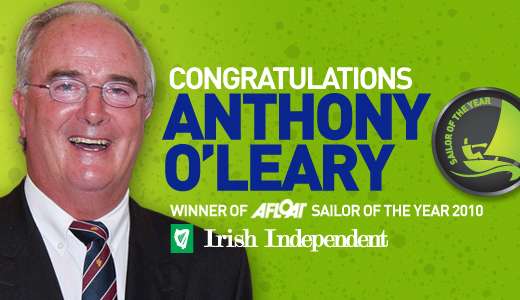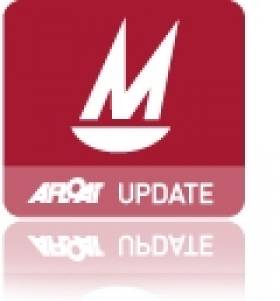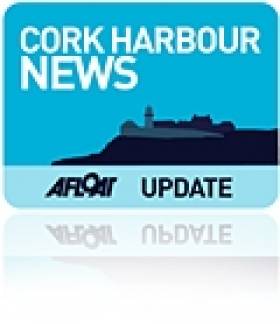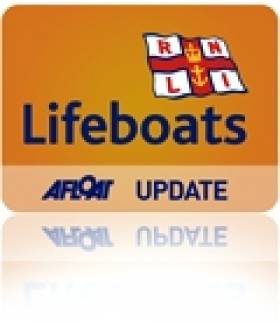Displaying items by tag: sailor
Outstanding Anthony O'Leary is Worthy Sailor of the Year
Anthony O'Leary of Cork is the Afloat.ie/Irish Independent "Sailor of the Year" in celebration of his outstanding achievements afloat nationally and internationally throughout last season, and to honour his dedication to sailing in all its forms both as a participant and an administrator.

The O'Leary pace afloat and ashore belies his age of 53. During 2010, it was in May that he was "Sailor of the Month" for an already remarkable list of wins with his Ker 39 Antix. Having topped the April Series in Kinsale, he then won the Crosshaven-Dun Laoghaire race overall, went on to win his class and be one of the top points scorers in the ICRA Nationals in Dublin Bay, and then went on to Scotland to win his class overall with a nail biting brace of wins on the final day of the Scottish Series.
To achieve all that before May was out was exceptional, but the O'Leary progress was only beginning. The big picture was to maintain momentum towards the international Commodore's Cup in the Solent in August. Antix was one of the three boat squad, and her skipper was also the team captain in a campaign which was light years away from the glossy efforts which dominated the boom years of Irish affluence.

Anthony O'Leary takes on the waves at the helm of his yacht Antix during Cork week in Cork Harbour. Photo: Bob Bateman
In previous seasons, Ireland had been able to muster enough boats for two or even three teams, yet had never won despite being within inches of success. But this time round, only three boats were game for it, and only one – Rob Davis's Corby 36 Roxy – was new. Yet with Dave Dwyer's ever-keen Mills 39 marinerscove.ie filling the third slot, O'Leary headed a potent force, and he himself sailed with style and inspiring sportsmanship to give Ireland a commanding overall win.
Anthony O'Leary is the personification of Irish sailing at its very best. With the enthusiastic support of his wife Sally, he is father to a family which has logged outstanding sailing success at all levels. Yet he himself is in many ways the quintessential club sailor. He is as happy racing the Autumn series at Crosshaven with a 1720 or the West Cork regattas with a cruiser-racer, as he is competing at the highest levels. He has been among the front runners for the title of Ireland's "Sailor of the Year" several times. And now, as with all his wins, when he does do it, O'Leary does it with style.
Kearney and Odell Add World Mirror Title
After a solid performance in testing conditions Ross Kearney and Max Odell have won the Mirror World Championships in Albany, Australia today. The Royal North of Ireland pair finished the series with two good races on the final day to lead the 61-boat fleet after 15 races sailed.
For the final rounds the winds blew 18-22 with gusts to 28 knots for both races - Kearney had a third in the first race this morning, followed by another third and then a second to clinch the series.
The results is so far provisional and subject to confirmation. Overall score sheet available for download below.
Last August, in Sligo, the Belfast Lough duo picked up the European title.
The prizegiving ceremony is underway in Albany now at 8pm Australian time and there will be more updates later on the win for Ireland.
It is not the first time Royal North of Ireland Yacht Club is celebrating a world championship homecoming tonight because Kearney won it previously in Sweden in 2005 aged 19. He was crewed then by Adam McCullough (11) when they lifted the world title at Östersund.
Today is Ireland's fifth win of the regatta that is open to all but is predominantly contested by youth crews.
The Belfast youth's follow in the footsteps of club mates Chris Clayton and Craig Martin who won the championship in Australia in 2003 previous to that Ireland won the biennial fixture in South Africa in 1999 and also when it was hosted in Howth in 2001.

Ross Kearney and Max Odell survive a luff in 20 plus knots ! Photo: Rob Cruse. More photos from Rob HERE.
Kearney named January Sailor of the Month HERE
Freddie Cooney Remembered
Cruising Sailor Rescued off Cork Harbour
A sailor who got into difficulty cruising from Wales to the Canary Islands was rescued and brought to safety in Cork Harbour yesterday.
The 10-metre yacht hit poor weather conditions near the Pollock Rock east of Power Head and lost the use of its VHF radio. The skipper was heading for Cork Harbour when he also encountered steering problems.
A passing fishing boat lent assistance and contacted the Coastguard. The vessel was towed to Crosshaven by Ballycotton lifeboat.
Related Safety posts
RNLI Lifeboats in Ireland
Safety News
Rescue News from RNLI Lifeboats in Ireland
Coast Guard News from Ireland
Water Safety News from Ireland
Marine Casualty Investigation Board News
Marine Warnings
Sailor Rescued from Burning Boat off Cork Coast
Youghal and Ballycotton lifeboat stations responded to the call and Ballycotton lifeboat station spoke of how they could see the black smoke in the distance as they rushed to the lifeboat station. An angling boat in the vicinity recovered the lone sailor from the sea. He was transferred to another angling boat and was immediately taken to Youghal where his condition was assessed by medical personnel.
Youghal and Ballycotton lifeboats were requested by the Coastguard to remain on scene while the pleasure craft blazed. Approximately an hour later the boat sank and the lifeboats returned to station.
Related Safety posts
RNLI Lifeboats in Ireland
Safety News
Rescue News from RNLI Lifeboats in Ireland
Coast Guard News from Ireland
Water Safety News from Ireland
Marine Casualty Investigation Board News
Marine Warnings



























































